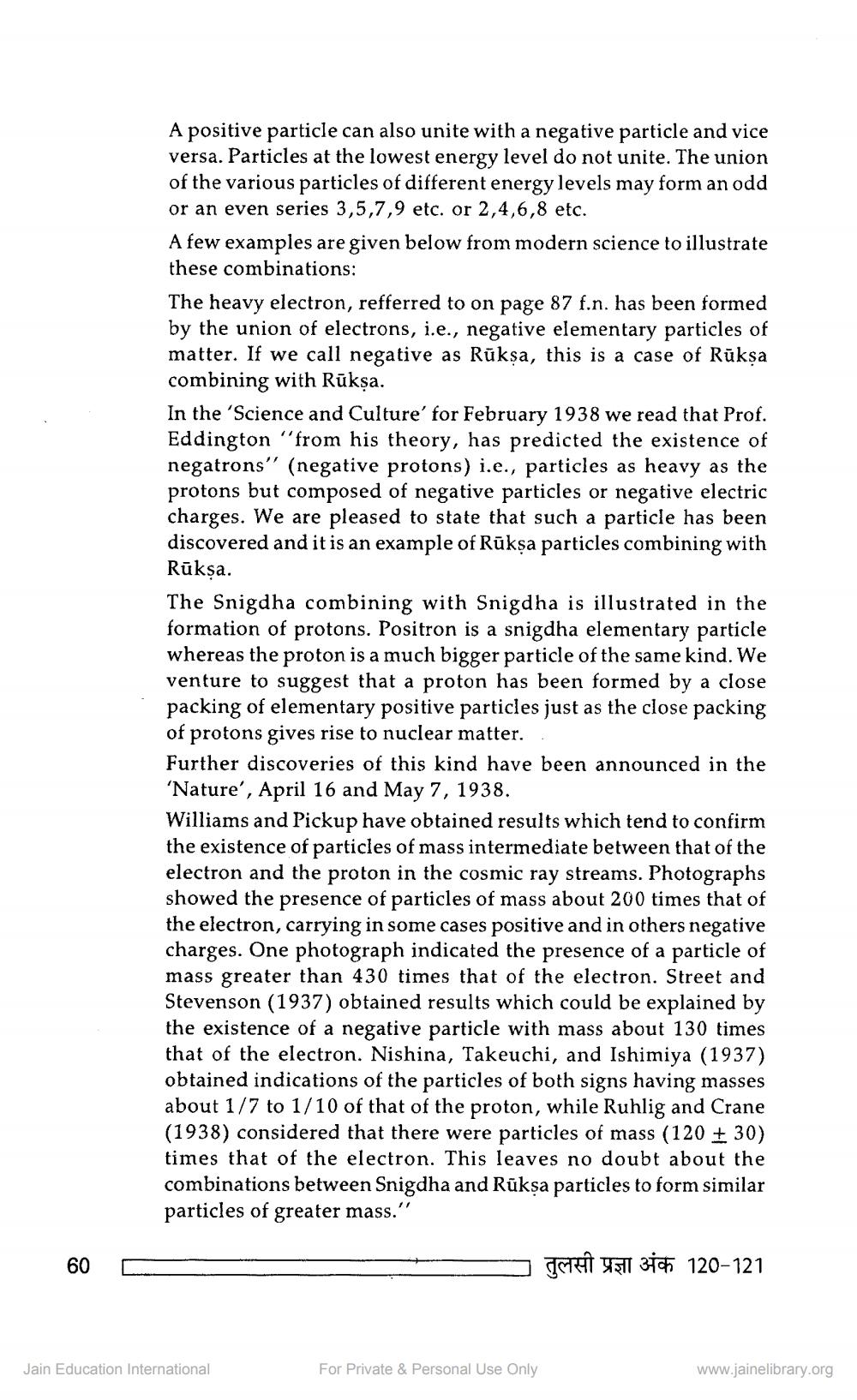________________
A positive particle can also unite with a negative particle and vice versa. Particles at the lowest energy level do not unite. The union of the various particles of different energy levels may form an odd or an even series 3,5,7,9 etc. or 2,4,6,8 etc. A few examples are given below from modern science to illustrate these combinations: The heavy electron, refferred to on page 87 f.n. has been formed by the union of electrons, i.e., negative elementary particles of matter. If we call negative as Rūksa, this is a case of Rūksa combining with Rūkşa. In the 'Science and Culture' for February 1938 we read that Prof. Eddington "from his theory, has predicted the existence of negatrons'' (negative protons) i.e., particles as heavy as the protons but composed of negative particles or negative electric charges. We are pleased to state that such a particle has been discovered and it is an example of Rūkņa particles combining with Rūkņa. The Snigdha combining with Snigdha is illustrated in the formation of protons. Positron is a snigdha elementary particle whereas the proton is a much bigger particle of the same kind. We venture to suggest that a proton has been formed by a close packing of elementary positive particles just as the close packing of protons gives rise to nuclear matter. Further discoveries of this kind have been announced in the 'Nature', April 16 and May 7, 1938. Williams and Pickup have obtained results which tend to confirm the existence of particles of mass intermediate between that of the electron and the proton in the cosmic ray streams. Photographs showed the presence of particles of mass about 200 times that of the electron, carrying in some cases positive and in others negative charges. One photograph indicated the presence of a particle of mass greater than 430 times that of the electron. Street and Stevenson (1937) obtained results which could be explained by the existence of a negative particle with mass about 130 times that of the electron. Nishina, Takeuchi, and Ishimiya (1937) obtained indications of the particles of both signs having masses about 1/7 to 1/10 of that of the proton, while Ruhlig and Crane (1938) considered that there were particles of mass (120 + 30) times that of the electron. This leaves no doubt about the combinations between Snigdha and Rūksa particles to form similar particles of greater mass.'
To
317 120-121
Jain Education International
For Private & Personal Use Only
www.jainelibrary.org




